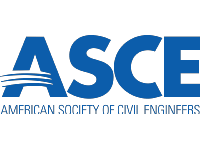
Odborný článek Simulation of Thaumasite Sulfate Attack on Portland Cement Mixtures Using Synthesized Cement Phases od dvojice autorů Ing. Konstantinose Sotiriadise, Ph.D. z Oddělení materiálového výzkumu Ústavu teoretické a aplikované mechaniky AV ČR a Ing. Radosław Mróz, Ph.D. z Fakulty materiálových věd a keramiky z AGH Univerzity věd a technologií v Krakově byl hlavním editorem časopisu Journal of Materials in Civil Engineering vydávaného American Society of Civil Engineers (ASCE) vybrán jako tzv. Editor's Choice únorového čísla. Článek je možné si po registraci přečíst zdarma do konce měsíce.
Časopis Journal of Materials in Civil Engineering je měsíčník vydávaný American Society of Civil Engineers (ASCE) od roku 1989 a má impakt faktor 1,43. Jeho hlavním editorem je Antonio Nanni, Ph.D., P.E., F.ASCE, z Univerzity v Miami.
Abstrakt:
In this work, a simulation of thaumasite sulfate attack on portland cement mixtures was
performed, using synthesized cement phases. Three model systems containing C3S, C3A, and alkali
sulfate (CaSO4, Na2SO4, and K2SO4, respectively) and a fourth one consisting of ettringite and
C−S−H, were designed, and several mixtures were prepared. Ca(OH)2 and CaCO3 were optionally added.
Specimens stored at 5°C and 20°C in an atmosphere saturated in water vapor for 75 months were
investigated with X-ray diffraction analysis and scanning electron microscopy. Thaumasite formed in
all samples without C3A at 5°C, and at 20°C when sulfates were derived from CaSO4. Solid solution
of thaumasite and ettringite was detected in samples incorporating C3A and CaSO4 or Na2SO4 at 5°C.
This was also observed at 20°C when CaSO4 was the source of sulfates, whereas ettringite formed in
the case of Na2SO4. The absence of thaumasite and ettringite in specimens containing C3A and K2SO4
was attributed to the alkali carbonation process. In the fourth system, decomposition of ettringite
occurred in the specimens exempt of Ca(OH)2. The work is supposed to contribute to understanding
the primary causes of concrete damage when the concrete is subjected to long-term sulfate
attack.
8. 2. 2019



